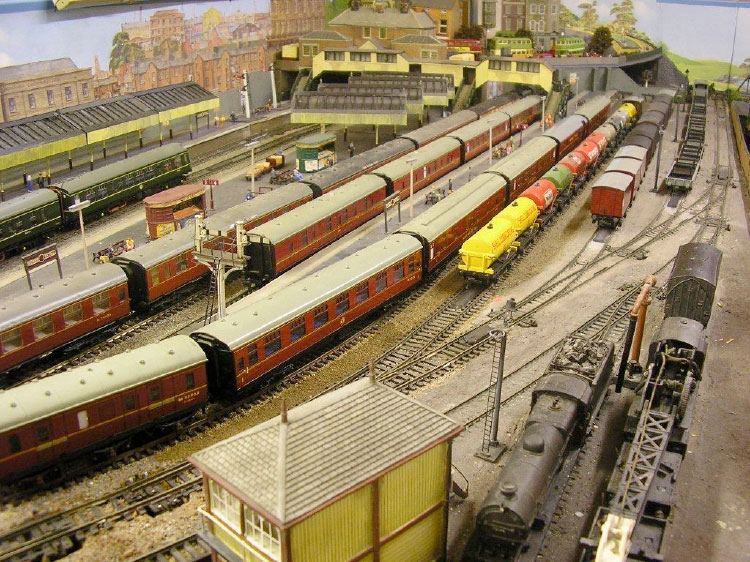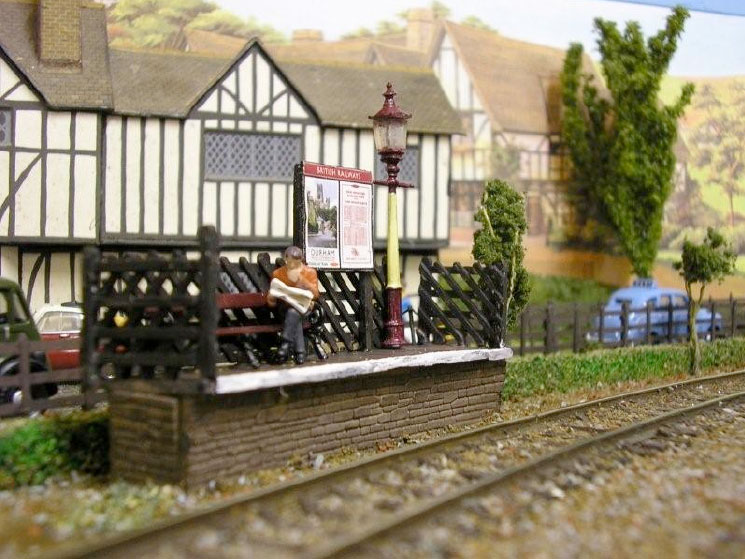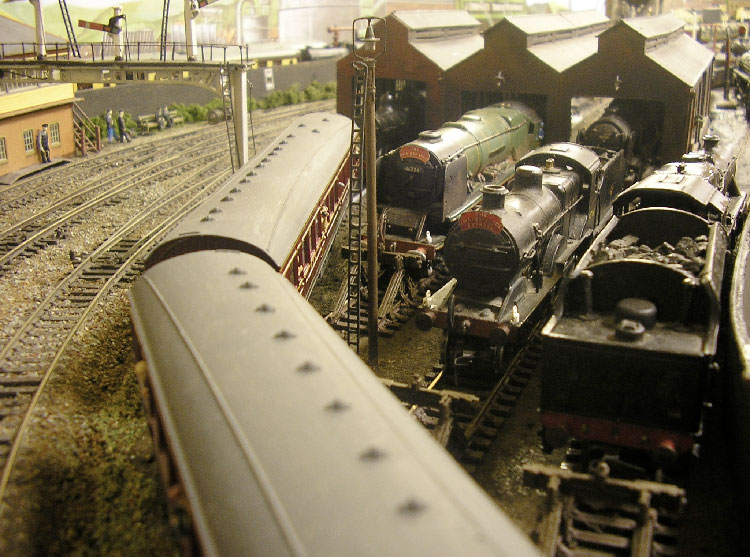The layout depicts the City of Hornby and its Central Station, which consists of six platforms, three through and three terminating platforms. There are goods facilities and a large shed area capable of servicing 20 locomotives.

By means of three main running lines, trains are run to the town of Elton, the main station being Elton Road. This station consists of 4 platforms, three through and one terminating platform. It has goods facilities and a large shed area capable of servicing 16 locomotives.
The main running lines pass through the village of Winewall, which has now obtained its own short platform, from which the railbus is able to take commuters to Elton Road to catch connections for Hornby Central.

The objective of the new layout was to tell a story, as though you were a passenger waiting to travel between major stations and passing through some lovely countryside on your way. We wanted to create an atmosphere generated by steam, grime, the personnel and the mechanisation of the day.
Our stud of locomotives now totals 46, all accommodated on the layout, without the use of a fiddle yard. Some are in engine sheds, some in railway yards, coal yards, on turntables, against buffers after arriving with incoming trains and some attached to trains ready to depart. The logistics of running our layout are mind boggling, but so much fun. (Click here to see the layout plan).

The electronics are old style, because that is what we are. Sectionalised by switches from Lancaster bombers, points worked by rod and wire and signals worked by touch button. The point blade direction is checked by eye, that means looking down the track, almost as it was in the 1950s.
Landscaping is minimal, possibly only one or two feet at either side of the track, just enough to distinguish town from country and moorland from farmland. Our interest centres on the trains and the people of the time, hence the appearance of policemen with their new Panda cars, and the railway maintenance teams taking up unused track, all strategically placed for maximum effect. We admit to not being architects or town planners but we think we have captured the era adequately.
Talking of people, we insist every loco has a footplate crew. Not only does this add realism to the scene, but they also fill the gap between the engine and tender. Each man is positioned for maximum visibility, so they are leaning out of the cab, resting on the tender, waving at passing train spotters. We don’t see any point putting them in there if they cannot be seen.
The landscaping consists of a series of simple cameos around the track, each visually telling a story that is easily understood, eg. the arrival of the new Panda cars and the interested policemen, the telephone workers reconnecting the wires to the farm, engine staff cycling to work down the terraced streets and the Town Square of Hornby full of shoppers, tourists and workers.
The station platforms tell their own story of expectation, excitement, rush and delay. In the coaches, people are sleeping, reading, eating and watching the countryside go by. Wherever you look on our layout there is a story unfolding.
